Potential Major
CC-Pol Science Fields
Star formation and magnetic fields
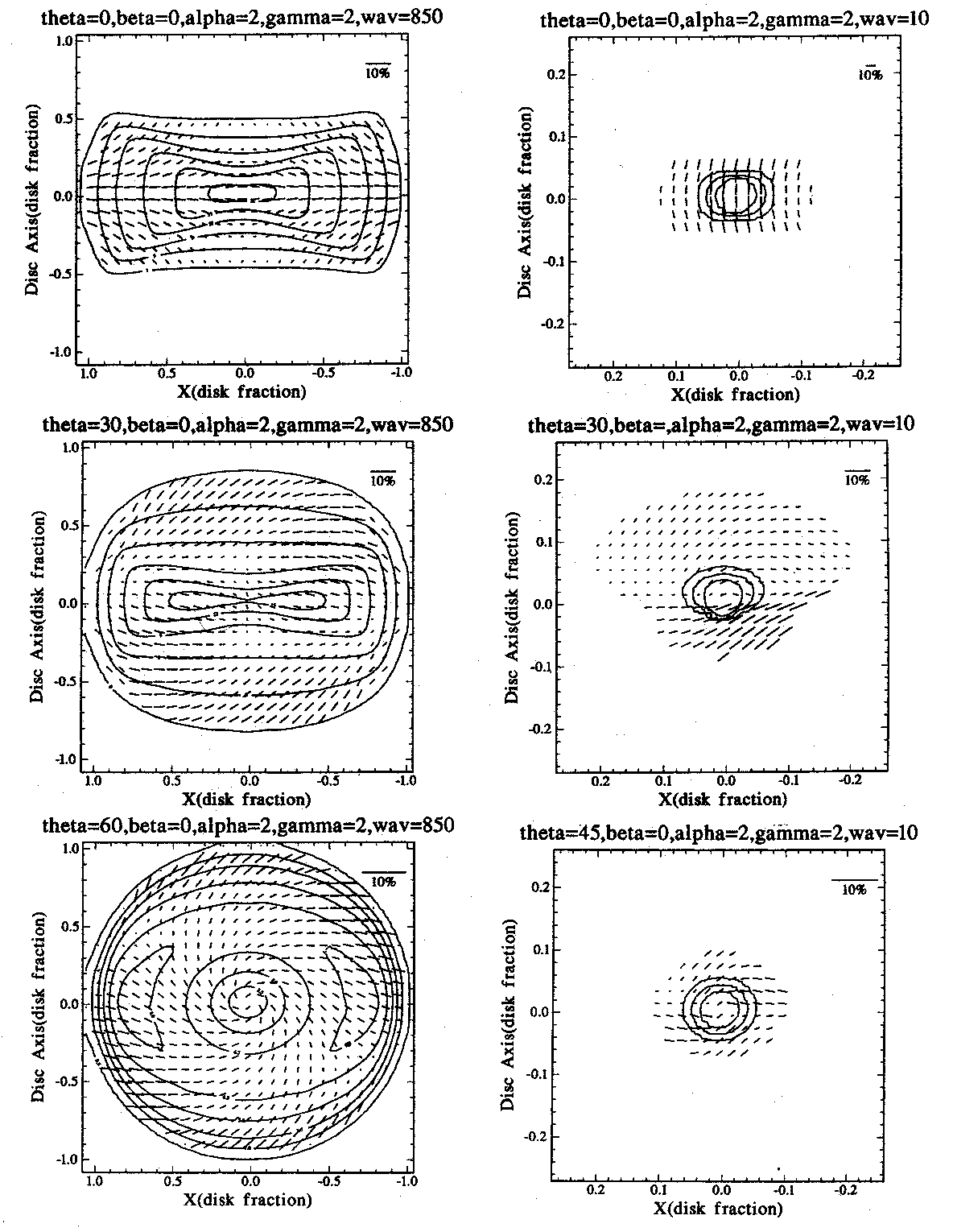
Polarimetric
Science with CC-Pol
Introduction
CC-Pol is the polarimetry module of CanariCam, one of the three instruments selected for Day 1 operation on the Spanish 10-m Gran Telescopio Canarias (GTC).
CanariCam is a 8-25 micron diffraction-limited imager for the mid-infrared. The instrument is being built at the University of Florida based on the oustandingly successful design of OSCIR (a travelling instrument) and its successor, T-ReCS (the Gemini South Mid-Infrared Imager).
CanariCam has a 320x240 detector giving a 25.6" x 19.2" field of view with 0.08" pixels. The limiting flux in broad-band N (10 microns) for a 5s detection in 100s is 0.9mJy and in broad-band Q (20 microns) is ~3mJy.
CC-Pol
will allow diffraction-limited imaging polarimetery to be made of a wide
range of astronomical sources that are described here.
In the mid/far IR the GTC will be similar to an optical telescope, but with some advantages which are similar to the millimetric range, namely:
Potential Major
CC-Pol Science Fields
Star formation and magnetic fields

The grains, responsible for polarisation in absorption or in emission, are always aligned with the local magnetic and thus the position angle of polarisation gives directly the direction of the magnetic field projected onto the plane of the sky. Spectropolarimetry across a resonance feature provides an unambiguous diagnostic of the presence of grains aligned by magnetic fields as there is a shift between the wavelength at which the extinction and the polarisation peak. Star formation is a major unsolved problem in astrophysics. It is generally recognised that magnetic fields play an important role in all of these processes yet present knowledge of even the magnetic field configurations is scant. Knowledge of the magnetic field structure close to young stars is needed to test the various predictions of MHD theories of star formation.
Mid-IR observations
are particularly important as the polarisation will be dominated by emission
from hot dust in a circumstellar disk, with the grains aligning with the
local magnetic field. Studies to date, mostly of high-mass stars, indicate
a magnetic field that tends to be in the plane of the disk and normal to
the larger scale field in the flow (Aitken
et al.; 1993). That the magnetic field close
to the star tends to be in the plane of the disk, is at variance with one
of the more plausible and attractive hydromagnetic models of bipolar flows
(Pudritz & Norman 1986).
However, the statistics are very limited and the spatial scale of the regions
studied is poorly defined. With CanariCam's sensitivity there should be
several hundred high-mass regions and many low-mass regions available for
study. Additionally, the higher spatial resolution provided by 10m telescopes
should allow the magnetic field geometries to be determined in far greater
detail, e.g. the degrees of twist and pinching of fields in the disk. Radiative
transfer models, that include polarisation in absorption and emission from
dusty disks are already available, allowing magnetic field configurations
to be determined from the observed polarisation images.
Magnetic binaries
Magnetic cataclysmic variables (mCV) consist of a white dwarf and a late type secondary. The orbital period is usually 2-8 hours. AM Her stars (polars) are mCVs characterised by a strong magnetic field (10-100MG), low accretion rate, a rather tight configuration and a lack of an accretion disk. DQ Her stars (intermediate polars) have weaker magnetic fields (<10MG), higher accretion rates, larger distances and an accretion disk.
The optical spectrum of polars shows humps, which are identified usually as the 4-9th harmonics of a fundamental cyclotron frequency, which is at about 200mm/B(MG), and thus in the IR. These objects are important for studying the influence of the magnetic field in determining the accretion geometry. Time resolved circular and linear polarimetry and phase resolved spectropolarimetry would yield some "quick projects" that would be of interest in generating rapid science results from CC-Pol even during commissioning as well as some slower ones. As an example, a star with an extreme polarisation is EV UMa. In 1994 it showed circular polarisation varying in R from +50% to -20% (Hakala et al., MNRAS, 271, L41, 1994). Five years later in 1999 the range was still very large, but had changed to +10% to -20% (Katajainen et al., A&A, in press, 2000).
Based on the X-ray properties RXJ 1914+24 would be classified as an intermediate polar. It even shows an X-ray eclipse. Optically the 18-19 magnitude light curve shows a double sinusoid. The object has been detected in the IR (Ramsay et al., MNRAS, 311, 75, 2000). It appears that both stars in this system are compact. The orbital period is only 9 minutes! This would be an ideal target for a circular polarimetric program, were this option to be implemented at a later date.
At the other extreme
is the star XZ Sge (Littlefair et al., MNRAS,
313, 117). The cool companion of this star
has not been detected with any certainty. Temperatures of <1700K have
been suggested for the secondary. A "quick" project that would be of great
interest would be is to search for signatures of the star
in the spectrum of scattered light using linear spectropolarimetry.
Stellar jets
There are several
stellar jet like features which would be of interest in IR. HH like-jets
have linear polarisations in optical up to 60%. (e.g. Schwarz
et al., A&A, 319, 267, 1997,
Schwarz et al., A.J., 119, 1339, 2000). As
second example let us consider the jet feature of R Aqr. The jet here appears
to be formed of "cosmic bullets". Imaging linear polarimetry of the jet
in R Aqr would be important in determining the physics behind the jet and
the surrounding 1' nebula.
Compact HII regions
Compact HII regions
frequently show a component of polarised emission from warm dust grains,
overlaid by absorptive polarisation. Polarised emission probes the fields
within the ionised region and gives information about localised field components
and their relation to the line of sight field revealed by the absorptive
polarisation.
Such studies can give important insights into some of the details of cloud
collapse and subsequent evolution of the HII region, and since the ionised
environment differs dramatically from that in molecular clouds, grains
may be aligned by a different mechanism. The number of such sources available
to CanariCam would again be several hundred compared with about a dozen
so far studied in spectropolarimetry. Here too there is great scope for
polarimetric imaging to investigate detailed field morphology.
Solar system bodies
The polarisation
of Solar System bodies can give information on the physics and chemistry
of surfaces and sometimes of hot spots, such as volcanic flows, and may
reveal the spin axes of unresolved bodies such as asteroids. Since all
of these studies concern solid state continua or features they would require
relatively low resolving power, say R = 30-100, in both the near and mid-IR.
Galaxies
Spectropolarimetry
at 10 and 20mm will be possible of giant HII regions
and molecular clouds in nearest bright spiral galaxies, giving a handle
on their dust chemistry grain alignment and magnetic field directions.
Microquasars
Microquasars are stellar black hole candidates showing X-ray flickering and a radio jet in high extinction regions. These sources are highly variable. High resolution imaging polarimetry would be important in unrevealing the detailed physics of both the core and the jet. GRS 1915+105 is optically strongly absorbed, and IR observations are urgently needed (for other observations seeMarti et al.: 2000, A&A, 356, 943; Eikenberry, 2000, Ap.J., 532, 33). GRS 0422+32 has a period of period of ~5 hours. The mass of the unseen companion is M>9MQ . Optical variability ranges from V=13.2 to V=22.4. Optical and IR photometry suggest an inclination of i=10deg ...30 deg (van der Hooft et al.; 1999, Ap.J., 513, 477).
Quasars
IR spectropolarimetry of blazars will facilitate the search for spectral lines in scattered light of blazars. An obvious initial observation programme would be based on the binary black hole model of OJ 287 (Lehto and Valtonen: 1996, Ap.J., 460, 207), which predicts that the next pericenter will take place in 2006. One would expect shifts in the spectral lines amounting up to ± 30000km/s in less than a year.
Imaging polarimetry of GHz peaking sources and Compact Steep Spectrum Sources (which may actually be identical sources) (e.g. Morganti et al.: 1997, A&A, 326, 130 and de Vries et al.: 1997, AJ Suppl, 110, 191): These are galaxies with the cores shrouded in thick dust. They could either represent a class of very young AGNs or alternatively they are AGNs with otherwise anomalously high dust contents. IR polarisation of these sources would be very important for studying the core emission. We are not aware of any variability studies of the cores of these galaxies in IR.
Active galaxies
Polarimetry has played a central role in our understanding of active galactic nuclei, from the study of blazars, with Doppler boosted synchrotron emission, to radio-quiet Seyfert galaxies. For the latter class of object, optical spectropolarimetry has been instrumental in developing unified theories, with its ability to observe the central regions of the AGN, which may be hidden from our direct view by an optically and geometrically thick torus. Nuclear continuum and broadline photons can be scattered into our line of sight by electrons and or dust located along the polar axis of the torus.While significant progress has been made there are a number of outstanding issues that still need to be addressed, particularly on the nature of the emission (non-thermal or from dust) for the far-IR ultra-luminous galaxies.
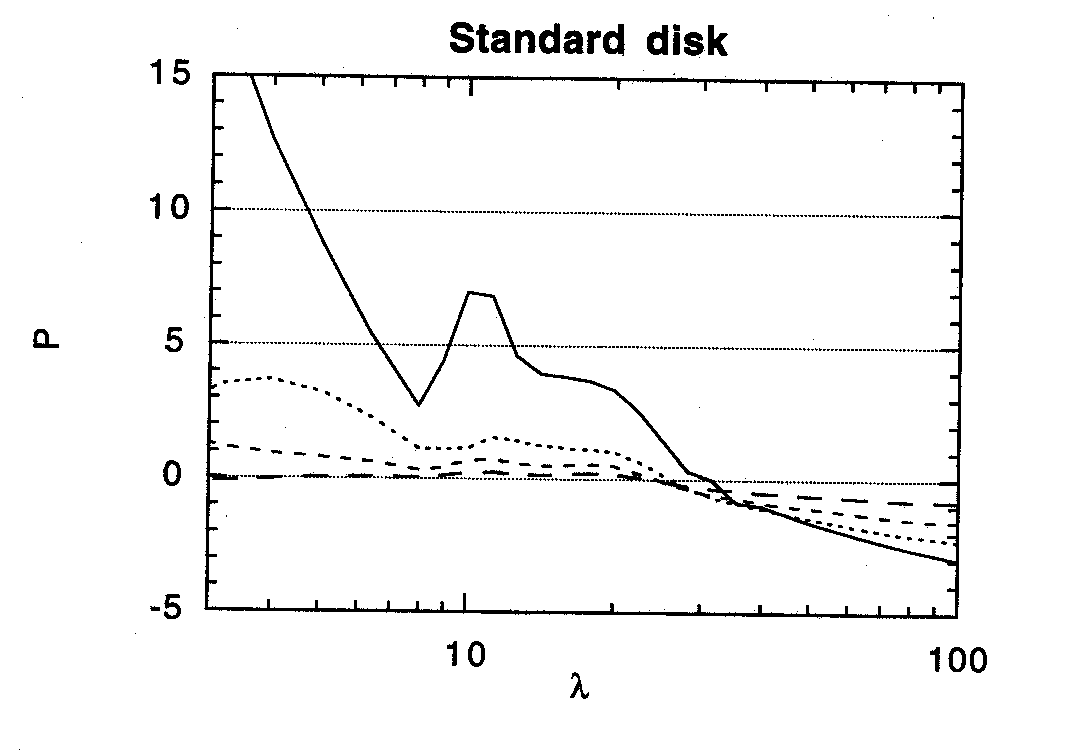
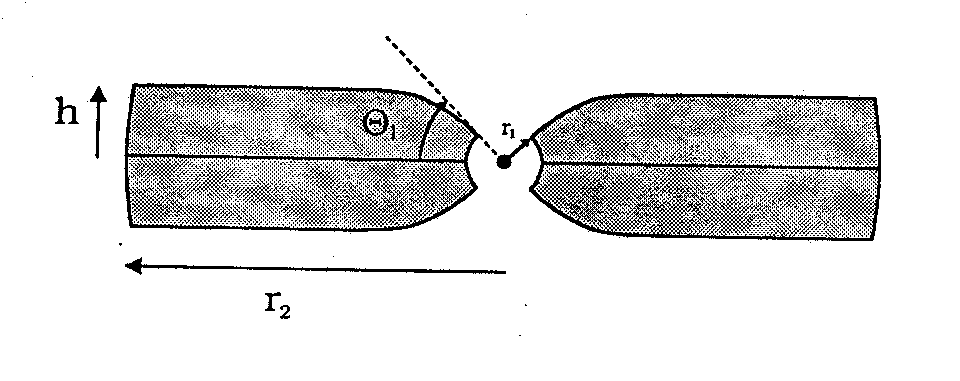
Spectropolarimetry
of the silicate feature at 10mm is a very important
diagnostic of polarisation mechanisms, but with 4m telescopes this has
been possible for just one object (NGC1068, Aitken
et al.; 1984). In NGC1068 the polarisation
is due to warm aligned dust grains, with the position angle of polarisation
orthogonal to that at near-infrared wavelengths. With CanariCam, the limiting
flux for spectropolarimetry at 10mm could well be
at ~0.3Jy (Dp~0.5% in a few hours) at a resolving power R~ 30, at which
level a number of AGN become available for study. Thus, spectropolarimetry,
through its ability to detect solid state spectral features, should be
able to discriminate between thermal and non-thermal emission in other
AGNs, such as starburst galaxies.
Chemical and physical properties of dust grains
Vibrational transitions in the solid state give rise to resonance features in the infrared, characteristic of the chemical bonds involved. These features are often polarised and the polarisation spectrum, unlike the intensity spectrum, is independent of the nature of the underlying source, so long as this is unpolarised. Even if this latter condition is not satisfied, polarisation in the underlying source, or variations in chemistry along the line of sight, are usually revealed by changes in position angle through the spectrum. Since the intensity and polarisation spectra are different functions of the optical constants of the grain material, spectropolarimetry gives additional and independent information about the physical and chemical structure of grains and their mantles. Finally, spectropolarimetry is a much more sensitive and independent probe of grain physics and chemistry than spectroscopy alone.
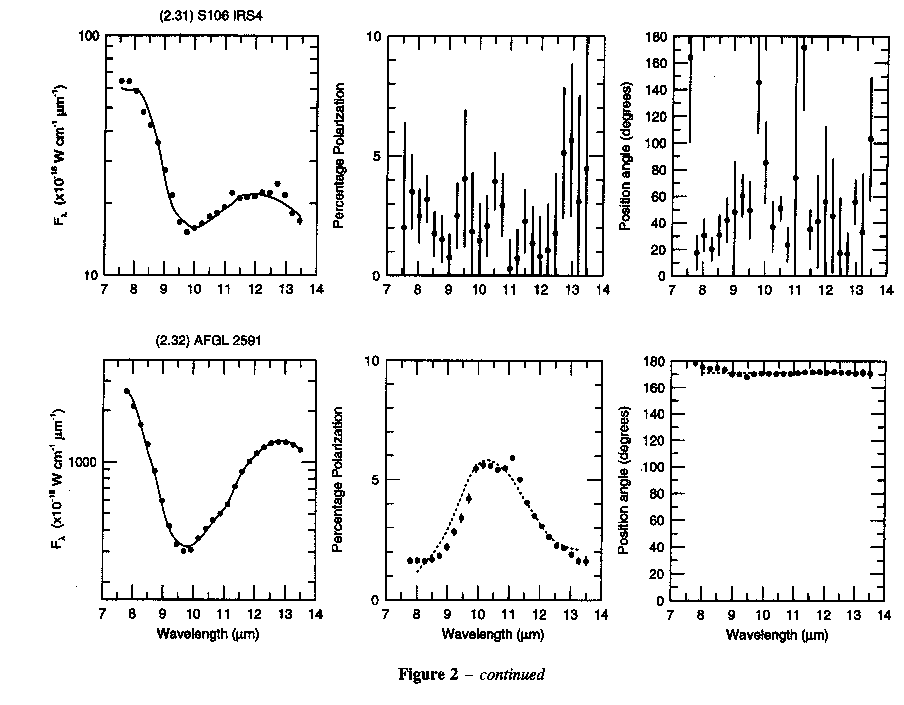
For instance polarisation spectra at 10 and 20mm have been used to argue that the grains responsible for the extinction to the BN object consist of an amorphous silicate core with a refractory organic mantle, while in AFGL2591 they indicate that some of the silicate grains have undergone partial annealing (Aitken et al.; 1988, and see above). Very few polarisation studies have been done at 20mm and CanariCam should be well placed to increase this number to statistical significance. There are also at present only a small number of objects whose 10mm polarisation spectra are not consistent with a generic silicate component, but even within this latter group there are significant variations of spectral form which indicate the physical state and history of the grain material. Only when the data base of these studies is increased significantly, as is possible with CanariCam, can these differences be put into a detailed inventory of the solid component of the interstellar medium.
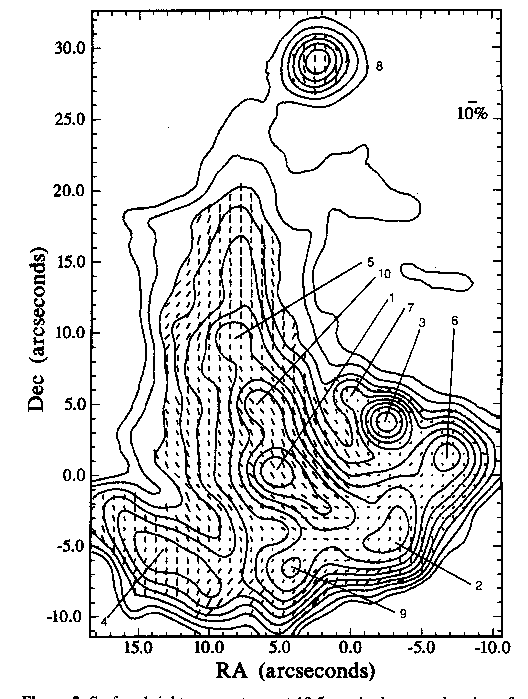
Galactic Centre
Studies of the
Galactic Centre have revealed strong polarised emission from the warm dust
grains within the ionised filaments in motion close to the non-thermal
radio source SgrA*. The magnetic fields indicated by polarimetric imaging
in the mid-IR are highly organised with respect to the filaments and show
structure at a one arcsecond scale (Aitken
et al.; 1991) close to SgrA* which would benefit
from the higher spatial resolution attainable with CanariCam at mid-IR
wavelengths. The field directions in the Galactic Centre are thought to
display the strain directions in the filaments and hence are directly related
to their orbital motions.
It is known that the radio and visible near-IR polarisation properties are very different, but it is not known where this changeover in properties occurs. The polarisation in the mid and far-IR is particularly interesting, as, in this range, it is theoretically possible to observe Faraday rotation. These observations will permit us to examine in detail the polarisation generation mechanism(s), magnetic fields and electron column densities in the sources. The fact that the proposed sources split into three distinct classes (radio-loud, x-ray loud and flat radio spectrum) allows a correlation between the inferred properties and the observed class of object.
Whilst the polarisation properties of blazars are well known in the visible and radio and fairly well known in the near-IR, lack of suitable instrumentation means that their mid and far-IR polarisation properties are only poorly known to the point that very little data even exists. This situation has not been rectified during the ISO mission given the difficulties that were found with polarisation observations with ISO instrumentation. These led to minimal polarimetric data being taken and what little data that exists is of somewhat doubtful quality due to problems in subtracting out the instrumental polarisation. No currently planned infrared satellite features a polarimetric option and only at most two polarisation-capable mid-infrared instruments will be available on 8-m class telescopes in the foreseeable future, thus this field is a fertile one for ground-breaking science over the next ten years.
Making reasonable assumptions about the sensitivity of the CC-Pol option and the expected flux from our sources we can certainly achieve 0.2% errors in P% in <3000s on-sky time in broad-band at 10 microns even with objects in a relatively faint state. The narrow-band performance will be as good or better due to the major reduction in the sky background level.